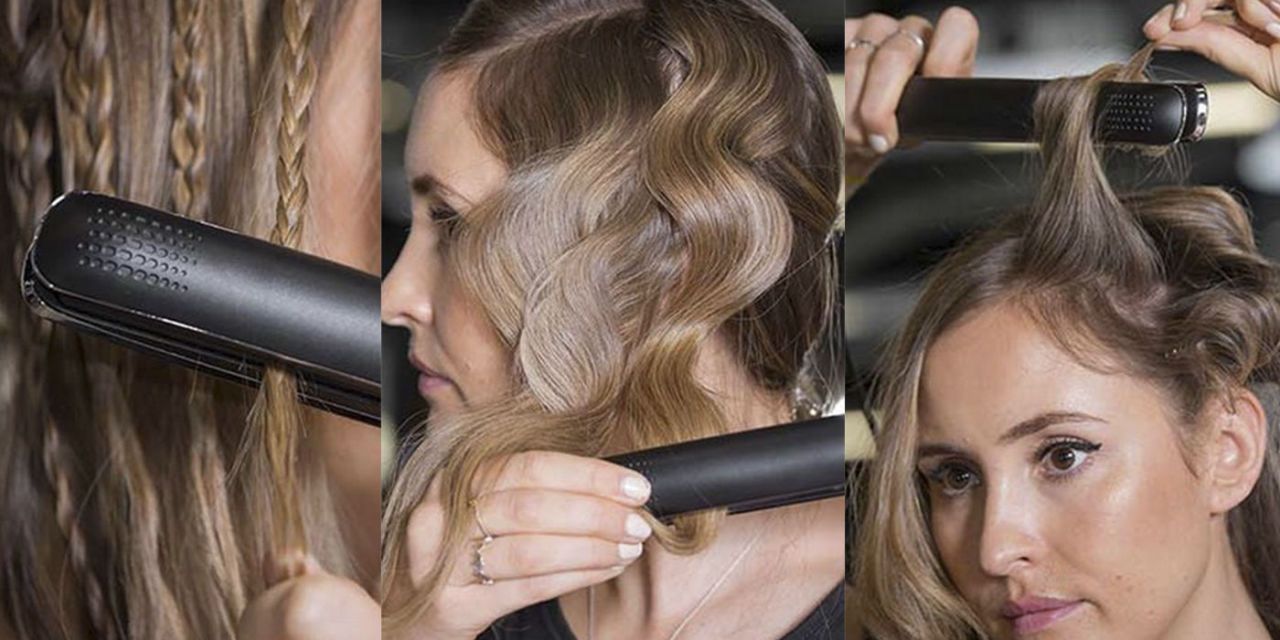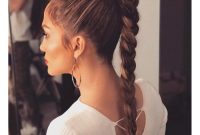Embark on a captivating journey into the art of transforming your tresses with a hair straightener, unveiling the secrets to achieving mesmerizing curls that turn heads. Discover the nuances of selecting the perfect straightener, preparing your hair for the transformation, and mastering the techniques to create a symphony of curls, from loose waves to tight ringlets.
Unravel the mysteries of heat protectants, detangling, and sectioning, ensuring your hair’s health and vitality throughout the curling process. Explore the intricacies of temperature control, clamp positioning, and rotating motions, gaining the expertise to craft curls that defy gravity and radiate charm.
Different Types of Hair Straighteners
Navigating the world of hair straighteners can be daunting with the diverse range of options available. From ceramic to tourmaline, titanium to infrared, each type promises unique benefits and drawbacks. Understanding these differences can help you select the perfect straightener for your hair type and styling needs.
Ceramic straighteners are a popular choice due to their even heat distribution and gentle nature on hair. However, they may not provide the same level of smoothness and shine as other types. Tourmaline straighteners emit negative ions, which help reduce frizz and promote a sleek, shiny finish.
However, they can be more expensive than ceramic straighteners.
Titanium Straighteners
Titanium straighteners heat up quickly and maintain high temperatures, making them ideal for thick, coarse hair. However, they can be more damaging to hair than other types due to their intense heat. Infrared straighteners utilize infrared technology to penetrate hair shafts, reducing styling time and minimizing heat damage.
However, they are often more expensive than other types.
Preparing Hair for Curling with a Straightener

To achieve beautiful, long-lasting curls with a straightener, it’s essential to properly prepare your hair. This involves cleansing, conditioning, detangling, and protecting it from heat damage.
Washing and Conditioning
Begin by washing your hair with a gentle shampoo to remove dirt, oil, and product buildup. Follow with a nourishing conditioner, focusing on the ends of your hair to prevent dryness. Rinse thoroughly.
Detangling
After washing and conditioning, use a wide-toothed comb or detangling brush to gently remove knots and tangles. This will help prevent breakage and ensure even heat distribution during curling.
Heat Protectant Spray
To minimize heat damage, apply a heat protectant spray to your hair before using the straightener. This spray creates a protective barrier on each hair strand, shielding it from high temperatures.
Suitable Hair Types and Lengths
Curling with a straightener is suitable for most hair types, including straight, wavy, and curly hair. However, it’s important to consider your hair length. Shorter hair may be more difficult to curl, while longer hair may require more time and effort.
Curling Techniques
Curling hair with a straightener offers a versatile styling tool for achieving various curl patterns. Understand the basic steps and techniques to create different types of curls, from loose waves to tight ringlets, while avoiding common mistakes for a natural-looking result.
Basic Steps for Curling Hair with a Straightener
1. Section Hair
Divide hair into manageable sections to ensure even curling. Clip up the sections you’re not currently working on to keep them out of the way.
2. Clamp and Rotate
Take a small section of hair, clamp it between the plates of the straightener near the roots, and rotate the straightener away from your face.
3. Glide the Straightener
Slowly glide the straightener down the length of the hair, keeping the plates closed and maintaining tension.
4. Release the Curl
Once you reach the ends of the hair, release the clamp and gently pull the straightener out.
Creating Different Types of Curls
Loose Waves:
- Use a wide-barrel straightener and hold the hair in the straightener for a few seconds before releasing.
- Create a loose curl pattern by alternating the direction of rotation with each section.
Tight Ringlets:
- Use a narrow-barrel straightener and clamp the hair closer to the roots.
- Hold the hair in the straightener for a few seconds before rotating and pulling it through.
- Repeat the process for each section, ensuring the curls are tight and defined.
Beachy Waves:
- Use a wide-barrel straightener and clamp the hair in the middle of the section.
- Rotate the straightener away from your face, then pull it through while creating a slight zigzag motion.
- This technique creates a natural, undone curl pattern.
Tips for Achieving Natural-Looking Curls
Use Heat Protectant
Apply a heat protectant spray to your hair before curling to minimize heat damage.
Avoid Over-Curling
Curling hair too much can result in a stiff, unnatural look.
Vary the Direction of Rotation
Alternating the direction of rotation creates a more natural curl pattern.
Let Curls Cool
Allow the curls to cool completely before brushing or styling them to set the curl pattern.
Styling and Finishing
To ensure that your curls hold their shape, allow them to cool down completely before styling. This will help to set the curl and prevent it from falling flat.
Once your curls are cool, you can style them as desired. For hold and definition, use hairspray, mousse, or gel. You can also use a curling iron or wand to add more curl to certain sections of your hair.
Maintaining Curls
To maintain your curls throughout the day, avoid brushing or combing your hair. This will help to prevent frizz and keep your curls looking their best.
When blow-drying your hair, use a diffuser to help preserve your curls. A diffuser will help to evenly distribute the heat and prevent your hair from becoming frizzy.
Safety Precautions

Using a hair straightener involves heat, which can potentially cause burns or hair damage if not handled properly. Therefore, it is crucial to follow safety precautions to ensure a safe and effective hair styling experience.
Before using the straightener, read the manufacturer’s instructions carefully and understand the specific safety features of your device.
Setting the Appropriate Temperature
Different hair types and textures require different temperature settings to achieve the desired results while minimizing the risk of damage. Generally, thicker, coarser hair can withstand higher temperatures, while finer, more delicate hair should be styled at lower temperatures.
- Fine or damaged hair: 150-180°C (300-350°F)
- Normal hair: 180-200°C (350-390°F)
- Thick or coarse hair: 200-230°C (390-450°F)
Always start with a lower temperature and gradually increase it if necessary. Avoid using excessively high temperatures, as this can lead to hair breakage and damage.
Unplugging and Cooling Down
After use, always unplug the straightener and allow it to cool down completely before storing. Leaving the device plugged in or storing it while still hot can pose a fire hazard.
To prevent accidents and ensure longevity of the appliance, make sure the straightener is completely cool to the touch before putting it away.
Conclusion

As you venture into the world of hair artistry, remember that practice makes perfect. With patience, experimentation, and a touch of flair, you’ll master the art of curling with a straightener, leaving a trail of envious gazes wherever you go.
Embrace the transformative power of heat and creativity, and let your curls speak volumes about your unique style and personality.
Answers to Common Questions
Q: Can I use a hair straightener to curl short hair?
A: While it’s possible to curl short hair with a straightener, it may be more challenging to achieve defined curls due to the limited length. Consider using a smaller barrel size or experimenting with different curling techniques to find what works best for your hair.
Q: How do I prevent my curls from losing their shape?
A: To maintain the longevity of your curls, allow them to cool down completely before styling. You can also use hairspray, mousse, or gel to provide hold and definition. Additionally, avoid brushing or combing your hair, as this can disrupt the curl pattern.
Q: What is the best way to store my hair straightener?
A: Always unplug your straightener and allow it to cool down completely before storing. Store it in a dry, cool place, preferably in its original packaging or a heat-resistant bag. Avoid wrapping the cord around the straightener, as this can damage the internal components.



